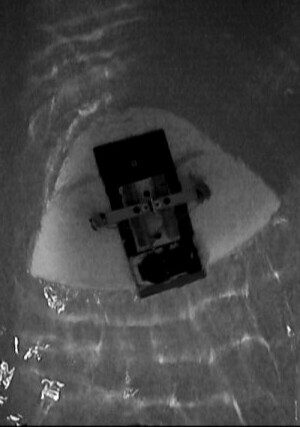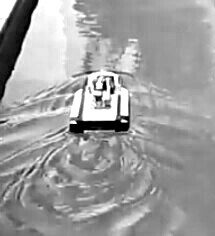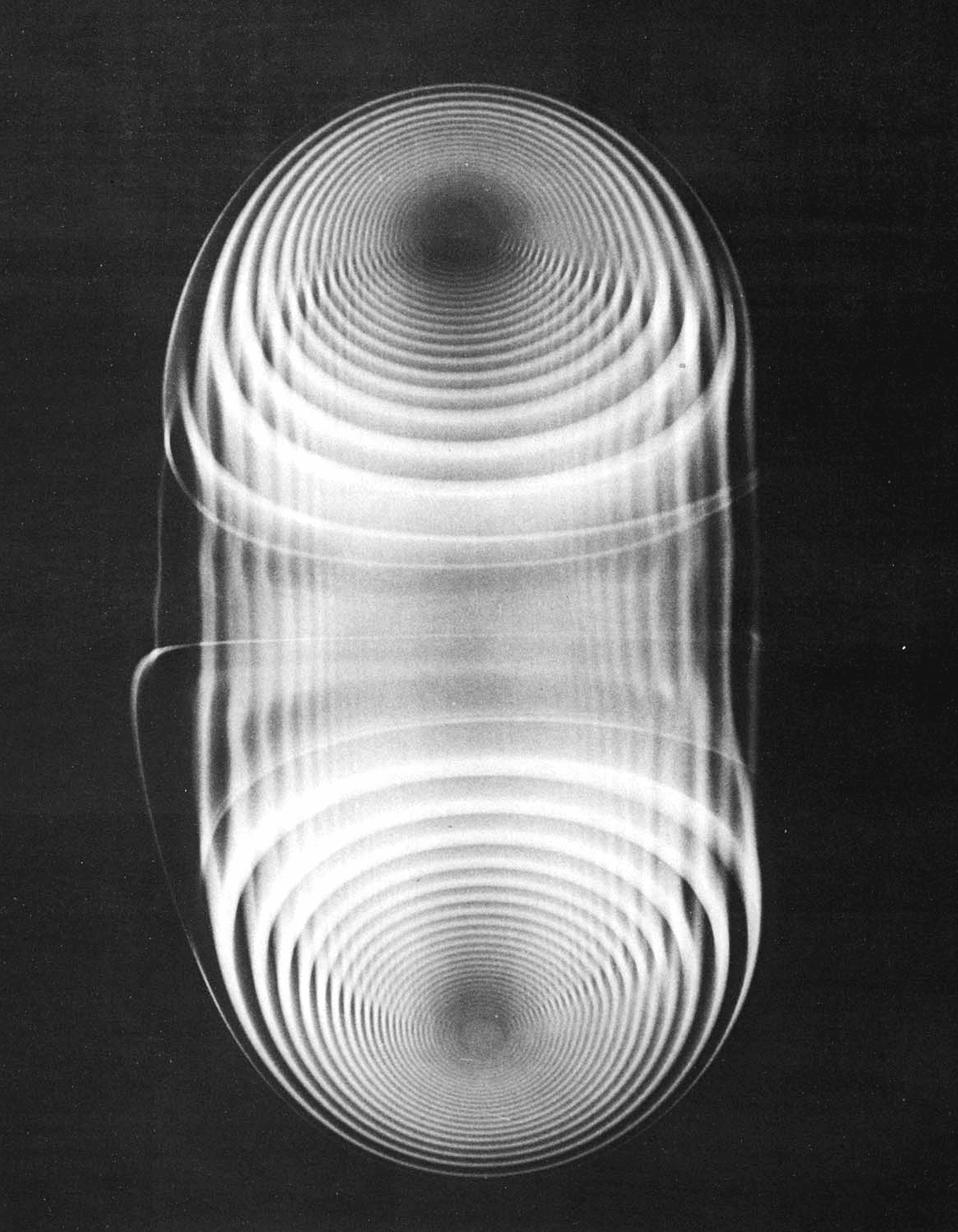
Trying to conquer outer space without using rockets, we faced two extremes. One of them is the numerous impossible and non-working engines created in practice on non-existent principles, and the other is very scientific principles that work according to the laws of physics, but, nevertheless, do not explain how to create such an engine. We will try to figure out how to implement a warp engine technically, that is, how to warp space in practice.
The most recent theory of the warp drive was proposed in 2020 by Eric Lenz. Its advantage is that it does not require the attraction of exotic antimatter to create a huge mass and works on the well-known laws of physics. Lenz, instead of the Alcubierre bubble, proposes to use solitons - single waves traveling over long distances without changing their shape or smoothing out.
Solitons arise in a variety of environments that are conducive to the formation of waves. Soliton was discovered by Scottish physicist John Scott Russell in 1834. Here's what he found:
“I was following the movement of the barge, which was being quickly pulled along a narrow channel by a pair of horses, when the barge suddenly came to a stop. But the mass of water that the barge set in motion gathered near the bow of the ship in a state of frantic movement, then suddenly left it behind, rolling forward at great speed and taking the form of a large single rise - a rounded, smooth and well-defined mound of water.
He continued on his way along the canal, without changing its shape or slowing down in any way. I followed him on horseback, and when I caught up with him, he was still rolling forward at about 8-9 miles per hour, retaining its original elevation profile, about thirty feet long and a foot to one and a half feet high. Its height gradually decreased, and after one or two miles of chase I lost it in the bends of the canal. "
Solitons are waves that behave like particles (a particle-like wave): when interacting with each other or with some other perturbations, they do not collapse, but continue to move, keeping their shape and speed unchanged. Solitons can spread in different environments. In 2002, a satellite of the European Space Agency discovered a soliton about 6 km wide in the region of the magnetopause, moving towards the outer edge of the solar system at a speed of about 9 km / s.
As a matter in which it is supposed to excite such a soliton, Lenz proposes to use a magnetoactive relativistic plasma. A relativistic plasma is essentially a plasma moving at a speed that makes up a significant part of the speed of light. Such a plasma can be created either by heating a gas to very high temperatures, or by impacting a high-energy particle beam. For example, it forms in supernovae. Therefore, although Lenz saved us from using very inaccessible dark matter, we still have the problem of unrealistically huge energy.

Just right to forget about it, and look in the direction of something simpler. Whether it's EMdrive - we take a microwave, put it in a bucket and a miracle happens there. Outside, no one sees it, but inside it is there ... Or solitons? After all, it's real and perhaps we will be able to find an easier way to get them.
To study this issue, we have a simple and affordable tool - this is water. In 1981, physicist William Unruh proposed to study black holes using analog, that is, those based on similarities, models of gravity, a method recently used by scientists. They observed the funnel as a result of the drainage of water in an attempt to simulate a black hole, and they did find similar features. In particular, this was the case with the waves that were absorbed by the funnel.
And so we see that many processes occurring in the space of time and which are difficult to directly observe are reflected in the macrocosm of the matter we are accustomed to. Therefore, we can try to make an analog model based on water to understand how to warp space and time. Our task is to simulate a warp drive in water. But first, let's figure out what a soliton is.
A soliton, visible in water as a surface wave, is structurally an annular or toroidal vortex. This is the optimal form of movement of matter in the environment. In a narrow sense next - a phenomenon in which a region of a rotating liquid or gas moves through the same medium.
Typically, such a vortex appears as a result of a sharp jolt, and the most obvious example is a smoke ring.
The reason for its existence is that trajectories of particles that move chaotically in a calm environment (Brownian motion) seem to be closed and this leads to their movement in a circle. These particles have their own energy, which manifests itself as their constant mutual attraction and repulsion. It allows them to be in motion all the time, and therefore they can transfer the energy contained in the vortex over long distances without loss. Such a vortex can be reflected and change direction, thereby repeating the properties of the particle. This guy perfectly demonstrates how a toroidal vortex / soliton / wave / particle behaves in different situations:
In the case of the barge, which formed a soliton in the channel, what happened was that the mass of water entrained by it continued its movement after the ship stopped. The bow of the barge squeezed the water ahead of it, creating a forward-moving wave, while a zone of reduced pressure followed. The stopping of the barge led to the fact that while the central part of the wave was still moving forward by inertia, its edges began to be pulled into rarefaction from behind. And since their volume was not enough to fill this space, water poured into it from behind. This led to the appearance of a closed toroidal vortex.
The simplest example of this phenomenon is probably known to everyone. When a car comes past you at speed, after a while you feel how the air following it pushes you. If this car suddenly stops abruptly, the air vortex will hit it from behind and scatter, reflected to the sides. And the narrow channel of the channel, in which the exchange was moving, allowed the vortex to re-reflect and go around the exchange to continue moving forward.
And so, how will the spacecraft move in such a soliton using the example of water?
Unfortunately, the infinite or very long motion of a ship in a soliton is possible only in two cases - if the ship itself turns into a toroidal structure, or if the soliton is so huge and powerful that the ship will be carried away by it like smoke particles in a smoke ring traveling in a vicious circle. The second option is, in principle, more acceptable, but nevertheless it is the same thing that a tornado will carry you away. So we have not yet solved the problem of a huge amount of energy, although we have shown by the example of liquid and gas that travel in a soliton is quite possible.
But let's try to consider a different approach. In the case of the exchange, there was still a moment when the soliton created by it put pressure on it, forcing it to move on, until it overtook it and went ahead. The fact is that the formation of an annular vortex of the soliton was caused not so much by the wave pushed by the barge as by the free space behind it. Filling this space with water was like a collapse and allowed the formation of a soliton behind the ship.
In order for the barge to create a soliton of the slightest degree, it is enough for it to simply move forward relative to its center of mass, as in the classic example with a barge and a car. If the car travels along the barge from bow to stern, then its hull will move forward and this will also create a soliton. If this displacement is sharp enough, then we can get the same force that resulted from the slow towing of the barge by horses for a long time. And although the action of the soliton on the ship will be short and almost imperceptible, we will be able to repeat this action, returning the car to its starting point very slowly, so that this does not cause a backward-directed soliton of the same strength. With each subsequent jerk, the initial speed of the barge will already be greater, and we will be able to accelerate little by little, with the help of small but multiple solitons and without the participation of excessively huge energy. Thus, we have already obtained the simplest water model of a spacecraft propelled by solitons. This is what it looks like (forgive me those who have seen this many times):
Okay, this, of course, is great in the water - you pull forward and move. But in space, we still need a relativistic plasma and what to get it from. And this is not much better than a rocket. If it's better at all. How can we bend space without this? Maybe the Doppler effect? We paint the front of the ship in blue, and the tail in red, and now we get light waves, short in front and long in the back - the space around the ship is curved. A ship from the front approaches from the front and recedes from behind ...
But seriously - can we get a warp bubble by compressing the space behind the ship and expanding it in front with the help of waves to get this:

Let's try to do this for a start with at least water. We can take the same exchange as a basis for our model, imagining that its body is a kind of emitter that creates waves in water-space. We will also move it back and forth with the car and push the water in opposite directions with different strengths. We will send a strong wave forward, and a weak wave back, and so the water around the barge will stretch more on one side than on the other. In principle, we have already done this and we managed to get movement through waves of different lengths as in the picture above. These waves are:

And as we already know, these waves must be solitons, that is, practically moving material objects, because in the case of elastic waves, no movement will occur except for circles on the water. In order to get them in space, we still need a plasma source.
Or not? After all, we can make small solitons, but a lot, extracting them directly from the space of time, from which the stars were formed, and any other that is quite tangible and materially carried in space at great speeds. We just have to answer the question how? How to form a soliton from space-time?
The answer is a wave particle. This is the minimal soliton that forms from space-time. Think of the guy with the smoke rings, which, although they are not solids, still behave like they - they hit, reflect, change direction, split in two, and at the same time do not lose their energy as if they were just balls. This is the analog wave-particle model that can be created in water or air. We can make photons, right?
This means that in order for our barge to be able to leave the channel and go to conquer space, it must transform, transform ...

Transform into a photon engine. This is an engine in which the energy source is a body that emits light. The photon has an impulse and, accordingly, when it flows out of the engine, the light creates a jet thrust. Theoretically, a photon engine can develop the maximum thrust possible for a jet engine in terms of the spent mass of the spacecraft, allowing it to reach speeds close to the speed of light.
Uh .. what a twist. But this is not interesting, you might think, we have already heard this, this is a matter of the distant future, and so on, and so on. And the speed of light remained insurmountable. And in general, this is again a jet engine, but we wanted something else - warp, drive ...
There is bad news (with a very gray beard) - no material body can set itself in motion without another material body of the same kind, which in some way is also a soliton - a photon. But at least we can get a working fluid from the environment, and this is already good news. So don't be discouraged, especially since we have one little consolation bonus that was not there before - this is the water model of this soliton-photon-emitting and radiant warp drive.
And in fact, we only recently learned how it works in practice. Although it has existed for a very long time, it has been endowed with any qualities other than those that it actually possesses. Some, very educated people, believed that she moved without starting from anything and seemed to pull herself by the nose like Baron Münghausen. Other, even more educated people believed that she was moving backwards, because they did not know such laws of physics (we talked about them when we studied the movement of the barge), that would allow her to move as it happens. And given this, we can assume that they also did not know something about photon and warp drives. What exactly? Well, maybe the fact that they will fly backwards, or a little faster and easier than it once seemed. Who knows? At least we already have some prerequisites to try to implement this technically and a chance to test it.
Well ... all that remains is to come up with a little thing with which this body will radiate ... Maybe a small car that will go inside very quickly ...
It can be simplified a little. Perhaps you are wondering what a photon engine that radiates in one direction and that wondrous radiant body have in common. We will return to analog models. The analogue of the photon engine will be an ordinary acoustic speaker. Some uncles point out that the speaker can create the pressure of sound waves. But in fact, if we download a frequency generator to our phone and turn on a very nasty sound of about 1000 hertz, and then bring a source of smoke to it, we will not see any sound waves.
We will see a jet stream. Air will be drawn in at the edges of the speaker and ejected from the center in the form of solitons. They will be obtained because as a result of the vibration of the membrane, rarefaction will appear every now and then, the collapse of which forms a soliton. It will exert pressure on the membrane and then, being reflected, fly back in the form of a jet stream. The same thing happens behind our water model - the waves that come back from it are reflected solitons. And by the way, just like an ordinary rocket, the exhaust gases are pushed into the nozzle, and then they fly out, unnecessary to anyone. Didn't you know?
In general, we buy an ordinary Chinese flashlight, throw it into space and the warp drive is ready ...
But still, if you were able to digest all this and took it for granted that jet propulsion with or without emissions on an equal footing with sailing is our destiny, then how can we make such a powerful flashlight that will fly away by itself? Share your ideas, they are sure to be stolen by someone. Perhaps it will be me.








